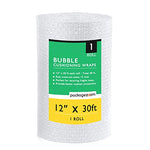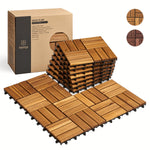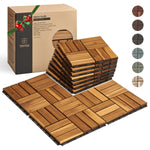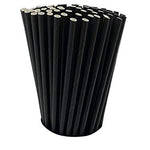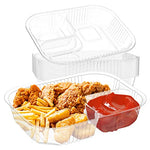You have no items in your shopping cart.
Welcome to our comprehensive guide on termite damage to drywall. If you're a homeowner or property owner, it's crucial to understand the potential risks posed by termite infestation and the damage they can cause to your drywall. Termites are relentless pests that can wreak havoc on the structural integrity of your property if left unchecked. In this article, we will explore the signs of termite damage, preventive measures, and steps to repair and protect your drywall. So let's dive in and arm ourselves with the knowledge needed to safeguard our walls against these destructive creatures.
Termite Damage Drywall: What You Need to Know
Termites are tiny, wood-eating insects that operate silently, making them difficult to detect until significant damage has occurred. Drywall, being a cellulose-based material, serves as a prime food source for termites. When termites infest your walls, they can cause extensive damage, compromising the stability and safety of your property. Let's explore the various aspects of termite damage to drywall and how you can effectively deal with this issue.
Signs of Termite Damage Drywall
Identifying termite damage early on is crucial for effective treatment and prevention. Here are some common signs to watch out for:
1. Hollow-Sounding Walls
When tapping on areas of your drywall, if you notice a hollow or papery sound instead of a solid one, it could indicate termite damage. Termites consume the inner layers of drywall, leaving only a thin surface layer intact.
2. Peeling or Bubbling Paint
Termite infestations can cause moisture buildup within the walls, leading to paint peeling or bubbling. If you notice these signs, it's essential to investigate further for possible termite activity.
3. Maze-Like Patterns
Inspect your drywall for maze-like patterns or tunnels. Termites create these tunnels as they burrow through the drywall, searching for cellulose to feed on.
4. Sagging or Warping Drywall
Severely damaged drywall can sag or warp due to the loss of structural integrity. If you observe any unusual changes in the shape of your walls, it may be a result of termite activity.
5. Presence of Wings or Discarded Swarmers
Termite swarmers are reproductive termites that leave the colony to establish new ones. If you find discarded wings or dead swarmers around your home, it suggests an active termite infestation.
Preventive Measures: Protecting Your Drywall
Prevention is key when it comes to termite damage. By implementing the following preventive measures, you can significantly reduce the risk of termite infestation:
1. Maintain Proper Ventilation and Drainage
Good ventilation and proper drainage help keep moisture levels low, making your property less attractive to termites. Ensure that your gutters are clear of debris and that downspouts direct water away from the foundation.
2. Eliminate Moisture Sources
Repair any leaky pipes, faucets, or roofs promptly to prevent moisture buildup that attracts termites. Additionally, consider using dehumidifiers in damp areas of your home to maintain optimal humidity levels.
3. Regularly Inspect and Seal Entry Points
Regularly inspect the exterior of your property for cracks, gaps, or other potential entry points for termites. Seal any openings in your walls, foundation, or roof to prevent termite access.
4. Store Firewood and Lumber Properly
If you have firewood or lumber stored near your property, ensure that it is elevated from the ground and stored away from your home's foundation. This minimizes the chances of termites migrating from the woodpile to your walls.
5. Schedule Professional Inspections
Engaging the services of a professional pest control company for regular termite inspections is an effective way to catch infestations early and prevent extensive damage. Professional inspectors are trained to identify subtle signs of termite activity that might go unnoticed to the untrained eye.
Repairing and Protecting Your Drywall
If you discover termite damage to your drywall, it's crucial to take immediate action to repair and protect the affected areas. Here are the steps to follow:
1. Consult a Professional
Contact a professional pest control company or a licensed contractor with experience in termite damage repair. They will assess the extent of the damage and provide recommendations for repairs.
2. Remove Infested Drywall
Infested drywall should be carefully removed to eliminate all traces of termite activity. This step ensures that termites cannot continue to feed on the damaged area and spread further.
3. Treat the Affected Area
Once the infested drywall is removed, the exposed area should be treated with an appropriate termite control solution. This treatment ensures the eradication of any remaining termites and prevents reinfestation.
4. Repair and Replace Drywall
After the treatment, the damaged section of drywall should be repaired or replaced. It's essential to hire a professional contractor to ensure proper installation and a seamless finish.
5. Apply Preventive Measures
To protect your newly repaired drywall and prevent future termite infestations, apply preventive measures discussed earlier in this article. Regular inspections and maintenance are key to avoiding further damage.
Frequently Asked Questions (FAQs)
Q1: Can termites cause structural damage to a property?
A1: Yes, termites can cause significant structural damage to a property if left unchecked. They feed on wood, including drywall, weakening the structure over time.
Q2: How long does it take for termites to cause noticeable damage to drywall?
A2: The time it takes for termites to cause noticeable damage depends on various factors such as the size of the termite colony and environmental conditions. In some cases, damage can be visible within months.
Q3: Are there any natural remedies to get rid of termites?
A3: While some natural remedies may help control termites to a certain extent, they are often not as effective as professional treatments. It's best to consult a pest control expert for thorough termite eradication.
Q4: How can I differentiate termite damage from other types of damage?
A4: Termite damage often exhibits specific signs such as maze-like patterns, hollow-sounding walls, and the presence of discarded wings or swarmers. If you suspect termite damage, it's advisable to seek professional inspection.
Q5: Are all termites the same?
A5: No, there are various species of termites, each with different characteristics and behaviors. Some species are more destructive than others, but all termites can cause damage if they infest your property.
Q6: Can termites be completely eradicated from a property?
A6: While it is challenging to completely eradicate termites from a property, professional termite treatments can effectively control and manage infestations, minimizing the risk of further damage.
Conclusion
Protecting your drywall from termite damage is essential to maintain the structural integrity and value of your property. By being vigilant, implementing preventive measures, and seeking professional assistance when needed, you can effectively safeguard your walls against termite infestations. Remember to schedule regular inspections and address any signs of termite activity promptly. With the right knowledge and proactive steps, you can keep termites at bay and enjoy peace of mind knowing that your drywall is well-protected.



